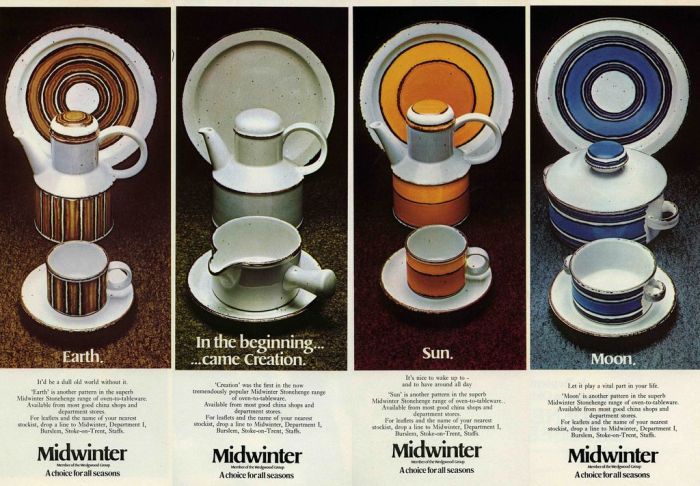The Politics of the Sewer: John Sayles and Lewis Teague’s ‘Alligator’
Reviews / April 2, 2020
 ROBERTS: Steven Spielberg called Joe Dante’s 1978 Piranha “the best of the Jaws ripoffs,” but my vote goes to 1980’s Alligator, directed by Lewis Teague and distributed by Group 1 Films, the latter responsible for some memorable exploitation fare that included The Clonus Horror, UFO’s Are Real (both from 1979), and Albert Pyun’s The Sword and the Sorcerer (1980). Both films are cult genius thanks to their writer, one John Sayles, who went on to become an indie film auteur as well as a writer of great American novels. Both films both have similar plots, and both are satires, but Alligator’s teeth sink a little deeper: our hero quite literally eats the rich. Also, Robert Forster’s in it, and I’ve never met a Robert Forster movie I didn’t like.
ROBERTS: Steven Spielberg called Joe Dante’s 1978 Piranha “the best of the Jaws ripoffs,” but my vote goes to 1980’s Alligator, directed by Lewis Teague and distributed by Group 1 Films, the latter responsible for some memorable exploitation fare that included The Clonus Horror, UFO’s Are Real (both from 1979), and Albert Pyun’s The Sword and the Sorcerer (1980). Both films are cult genius thanks to their writer, one John Sayles, who went on to become an indie film auteur as well as a writer of great American novels. Both films both have similar plots, and both are satires, but Alligator’s teeth sink a little deeper: our hero quite literally eats the rich. Also, Robert Forster’s in it, and I’ve never met a Robert Forster movie I didn’t like.
MCKENNA: The problem (for me) with writing about something like Alligator is, what the hell is there to say? It’s perfect. Timeless. It explains itself. It looks like a TV movie yet comes on like it actually has brains and a sense of humor. Not simply a curio of the 1980s (though if 1980s curio-ness is what you’re after, you won’t be disappointed—in fact your head may explode), it still works perfectly today without the need for you to strap on a postmodern irony helmet. It’s smart, self-aware, knows its limitations, and is basically why there’s almost zero incentive to go to the cinema to see genre stuff anymore: because who wants to sit through fucking hours of precious art direction when stuff like this highlights how much more economically and incisively the same goals can be achieved with far less? Somehow, even though pretty much everything about Alligator is trite—and that’s kind of the point—nothing about it feels trite. In addition to the estimable Forster, who’s in top form here even for him, there’s a great turn from Robin Riker as the female lead and appearances from Michael V. Gazzo and Henry Silva. Mike, what on Earth do you make of this little gem?
GRASSO: It seems like there have been a bunch of these ’70s/’80s B-movies we’ve looked at that I’d never seen before, that pleasantly surprised me, were made by folks who went on to do Serious Film later, and ended up having an interesting social-political edge to them, all while remaining on a basic level exploitation schlock. Endangered Species came to mind while watching Alligator, for certain. (Also, Kelly, thank you for reminding me that Alligator was produced by UFOs Are Real producer and narrator Brandon Chase!) It also has that same sideways ’50s monster movie vibe—doughty yet world-weary hero and brainy love interest investigate and battle a mysterious series of predations created by shadowy conspiracies and mad science.
Like Robert Urich’s character in Endangered Species, Robert Forster’s David Madison is a police detective who’s lost his faith in the system and is hounded by ghosts: in Madison’s case, a bust that went bad resulting in the death of his partner. As limbs start showing up in the town’s sewer system, the first theory of the crime (as in The Night Stalker, another film Alligator vividly reminded me of) is that a garden-variety late-’70s serial killer is on the loose. Turns out? It’s a 30-foot long alligator, released in the sewers 12 years prior by a teenage girl, Marisa Kendall: played as a grownup by Robin Riker, she’s now become the Midwest’s foremost herpetologist and helps Madison investigate and ultimately blow up the gator. The monster has been feasting on the corpses of experimental animals that have been fed a serum to increase their growth, part of a sinister biotech firm’s (Slade Pharmaceutical!) attempts to “feed the Third World.” Of course, nobody believes Madison even after he loses yet another partner in the sewers, and he’s fired from the force in favor of khaki-clad chauvinist big-game hunter (yes, seriously) Henry Silva, who gets to have an epic squint-off with Forster before getting swallowed whole by the gator.
Again, all fairly boilerplate monster movie cliché. But Alligator zags when you expect it to zig. Even if the plot emulates dozens of Roger Corman/Bert I. Gordon drive-in flicks from a generation before, it’s the little touches, the thematic surprises, and most of all the actors in this film that not just elevate the material but keep the viewer riveted, wondering where the hell this thing is going to head next. Between the aforementioned Michael “Frank Pentangeli” Gazzo, a serious thespian with impeccable Actors Studio credentials as the police chief (Henry Silva was actually one of Gazzo’s protégés), or Hollywood Golden Age mainstay Dean Jagger as the rambling oddball head of the biotech firm who inadvertently made the monster, this film is packed full of great actors. But Forster stands alone. Wikipedia tells me that it was this movie—not Medium Cool or any of his other ’70s or ’80s roles on the screen or TV—that inspired Quentin Tarantino to give Forster a shot as world-weary bail bondsman Max Cherry in Jackie Brown. And you know what? I can kind of see why.
ROBERTS: Yes, this is definitely Sales riffing on the ’50s monster movie, Mike, with your sinister corporation (Alligator was released exactly 10 days after Reagan was elected) standing in for atomic anxiety. I thought a lot about the classic Them! (1954) while watching Alligator, and in fact the estuaries of the Los Angeles River were used to great effect in both films. It’s a B movie all the way, but Teague, who had just directed another Sayles-penned picture, 1979’s The Lady in Red, mostly pulls it off. The effects are also surprisingly effective, especially the scene where the gator crashes out of the sewer onto the mean streets. As far as Forster goes, he has always been pegged as a “character actor,” a mostly bullshit term that describes incredibly versatile actors who are constantly typecast because they don’t look like Redford. I first saw him in The Black Hole, a formative film of my youth, and he’s been a favorite ever since. There’s a recurring male pattern baldness joke in Alligator that he simply slays (he improvised it, and Sayles wrote it in), not to mention the one-liners Sayles feeds him. Robin Riker—in her feature film debut—is also really damn good, despite some gross sexism and a predictably subservient role—similar to Jobeth Williams in Endangered Species. And Henry Silva? All I can say is: you will never experience a more disturbing alligator mating call.
The alligators in the sewers urban legend goes back to the 1930s, when the New York Times ran a story about a group of kids allegedly snaring and killing one after spotting it through a manhole. Thomas Pynchon made great use of the myth—which expresses industrialism’s struggle to suppress nature—in his first novel, V. (1963). Pynchon, as it turns out, was a great influence on Sales. Unlike the shark in Jaws, the gator here is something of an underdog. Shortly after the little girl brings it home, her dad gets upset about “alligator turds in the clothes hamper” (props to Mike’s ears for catching that choice piece of dialog) while (tellingly) a radio report tells us about the “chaos” of the 1968 Democratic Convention (the subject of Medium Cool). Dad flushes the gator—we spin around the bowl with the creature, looking up at the gruff patriarch we assume to be entirely sympathetic to Mayor Daley’s police force—and watch the little guy drop into the sewer with a splat, small and alone in the darkness. 12 years later, it becomes the monster it was made to be.
MCKENNA: The male pattern baldness joke is a beaut, and not just because the fact of its hitting close to home makes me feel as though perhaps I too might yet possess an iota of Forster-esque coolness. Like all great B-movie fare, it’s the film’s accumulation of miniature grace notes and memorable details that builds up into something gratifyingly greater than the sum of its parts. Take the extras, for example—everyone in Alligator acts and appears grizzled enough to credibly inhabit the film’s down-at-heel milieu: nobody looks like they just walked out of central casting, and everybody has a distinct personality no matter how briefly they appear.
I’m now going to return to one of my well-worn (though my fellow Mutants might prefer “overused”) opinions here and say that I think part of the reason Alligator still connects so powerfully is because it sort of feels like play—almost like our brains are making it up as we watch from the mulch of half-digested history, pop culture, and politics slopping around inside our craniums. None of the sets, locations or set pieces are particularly prepossessing (I mean, the big denouement is trying to convince an old lady driver to reverse her car, for fuck’s sake; you have to hand it to Teague: he makes the most of the little he’s got), much of the action is fairly low key, the story is hardly there, and a great deal of the pleasure derives simply from watching humans interact with each other, their environment, and a fuck-off massive alligator. It’s play. That’s what real B-movie genius is. That and kicking off with a gator attack that gets swept under the rug by the spectacle management so the wheels of commerce can keep turning.
GRASSO: And isn’t that a great place-setter for the overall social commentary in the rest of the film, Richard. I especially liked the set piece near the middle where the alligator’s reality has finally been revealed to the public (thanks to a tabloid reporter who’s been hounding Madison, Freddy Lounds-on-Will Graham-style, and who takes one final photograph of the monster as he’s eaten), and Henry Silva’s big game hunter is on the scene dropping depth charges in the local canal, and the entire town has turned into a three-ring media circus, complete with souvenir vendors hawking toy (and real) alligators. This scene happens right when Madison learns he’s off the case, and there’s that sinking feeling that all the wrong people are in charge of this crisis and that there’s going to be a lot of profiteering off of human injury and death. Hmm, maybe this wasn’t the right film to get our minds off of current events, guys.
But I think that gets to another thing I love about Alligator, which is how perfectly 1980 it is. Just little reminders here and there, like the aforementioned media circus (one practically expects to see “I Survived The Mega-Gator Attack” t-shirts for sale alongside the souvenir gator toys) or the big reveal scene of the alligator, where it busts Kool-Aid Man style through the concrete from the sewers while a bunch of kids (clad in an “I’m a Pepper” t-shirt, a late-’70s Texas Rangers jersey, and some kind of Freddy Krueger-esque red and green striped rugby shirt) look on. And yes, Kelly, the way Alligator substitutes corporate malfeasance for ’50s fear of the atomic age is also perfectly 1980. At the very dawning of the Reagan era, fear of pollution and criminality at the hands of unaccountable corporations was revving up, and the scientists’ use of poor innocent stray puppies as their experimental subjects is not only a perfect telegraphing of how evil they are but also pretty damn common in industrial corporate settings at this point in history. Whether or not they’re trying to help out with feeding the developing world, they’re literally killing puppies and throwing their bodies in the sewers.
So yeah, this film does eventually revenge itself on the corporate baddies. The foreshadowing in the scene where they’re setting up Slade’s daughter’s wedding at the local country club is perfection: you just know as soon as you see it that that alligator is going to go hog wild on all those rich people in the final reel. But the first two people the gator eats at the wedding are a pair of servants! That undercuts the impact of Slade’s limo being smashed by the gator’s tail just a little bit. But was I smirking in satisfaction when the inner-city kids who Silva’s game hunter deputizes (and condescends to) abandon him as he gets eaten whole by the monster? Yeah. That was pretty cool.
ROBERTS: Class is writ large across the whole film. “Looks like a working man’s hand,” Madison says after the first body part is found, and when he busts a vendor trying to sell live alligators during the media circus Mike mentions above, the vendor cries after him, “This is an attack on the free enterprise system! Communist!” We’ve got one-percenter Mr. Slade feeding the alligator mutant and mutilated puppies so that he can get richer by squeezing the Third World, we’ve got rich neighborhoods (helicopters scan the lush swimming pools) juxtaposed with poor neighborhoods (the setting is either Chicago or St. Louis—it’s never made clear; both cities were at the epicenter of the rust belt’s decline), we’ve got “the great white hunter” paying black kids to guide him through the inner city—so many of them were so destroyed by this point that they stood in for post-apocalyptic landscapes. And there’s the working-class cop who’s got more in common with the alligator—who he’s forced to blow up—than anyone else.
I won’t go so far as to say that the alligator is the proletariat, but it’s certainly the underclass (“It lives 50 feet beneath the streets,” the trailer forebodes), as well as nature’s revenge. The gator eats workers, sure, but it would starve otherwise: that’ s the law of the jungle. The real target is Slade, as the alligator’s calculated demolition of his limousine makes clear. All of this gives added relevance to the final moments of the film, when a new sewer dweller—another innocent baby bought and sold, then banished by owners who foolishly thought they could tame it—lands with a splat in the city’s collective shit. A monster movie cliché? Absolutely. But also the spectre of revolution.























































































































